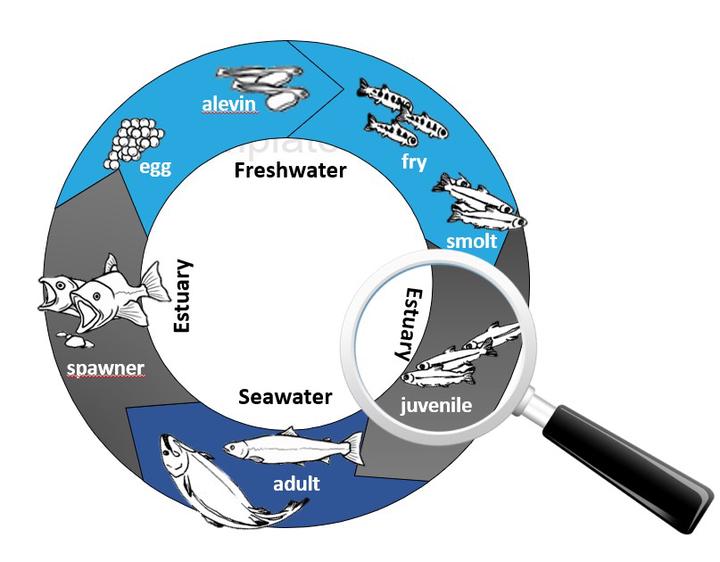Temporal and spatial patterns of outmigration of juvenile sockeye salmon in Rivers Inlet.

Abstract
The sockeye salmon, Oncorhynchus nerka, is economically, ecologically and culturally important for British Columbia and Canada. Currently, ~75% of sockeye populations are declining with a precipitous decline reported in Rivers Inlet (RI). The purpose of this study was to investigate the variability of juvenile sockeye residence and growth in RI during their outmigration to the Pacific Ocean. The point of the marine entry was estimated by Laser Ablation Inductively Coupled Plasma Mass Spectrometry (LA-ICP-MS) using otolith elemental composition (Sr:Ca ratio). A significant correlation was found between the day of entry and the duration of the migration. Average transit time through the inlet was ~ 2 weeks in 2011 and 2009, compared to ~ 4 weeks in 2008 and 2010. In terms of BL/s, the fish travel through RI with an average speed of 0.2– 0.5 BL/s. The size of the smolts at the entry to the inlet ranged between 54 and 83 mm. Detailed analysis of the full outmigration period in 2009 identified two possible migration behaviors, dependent on the day of entry and potentially the size of the smolts. Smaller fish that entered the inlet prior to mid-June exhibited a “holding” pattern at the head of the inlet, with an average residence time of 2-3 weeks. Smolts that entered the inlet later in the season swam continuously throughout the inlet. Using GAM models, it was determined that 78% of the weight at catch and 64% increase in weight were explained by the combination of water temperature, freshwater discharge, zooplankton densities and inlet entry size of smolts. The duration of the outmigration was dependent on river discharge and temperature, with 62% of the variation in outmigration duration explained by the model. Results suggest that there is a set of optimal environmental conditions for smolt growth during their outmigration. Outmigration timing was found to be the key determinant of conditions experienced and appeared to act as an equilibration mechanism between small and large smolts, resulting in similar size being attained by both by the inlet mouth.